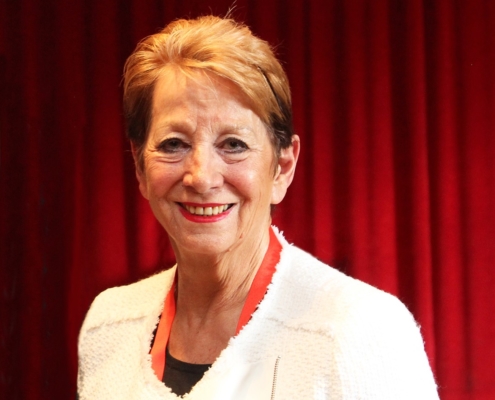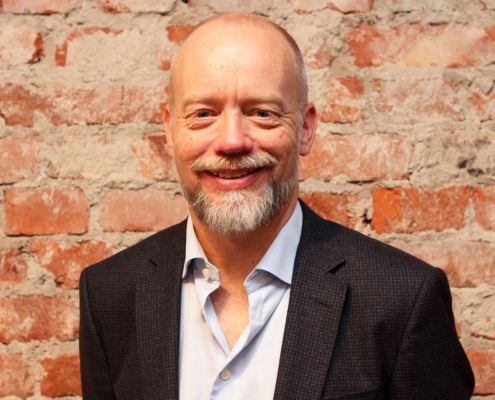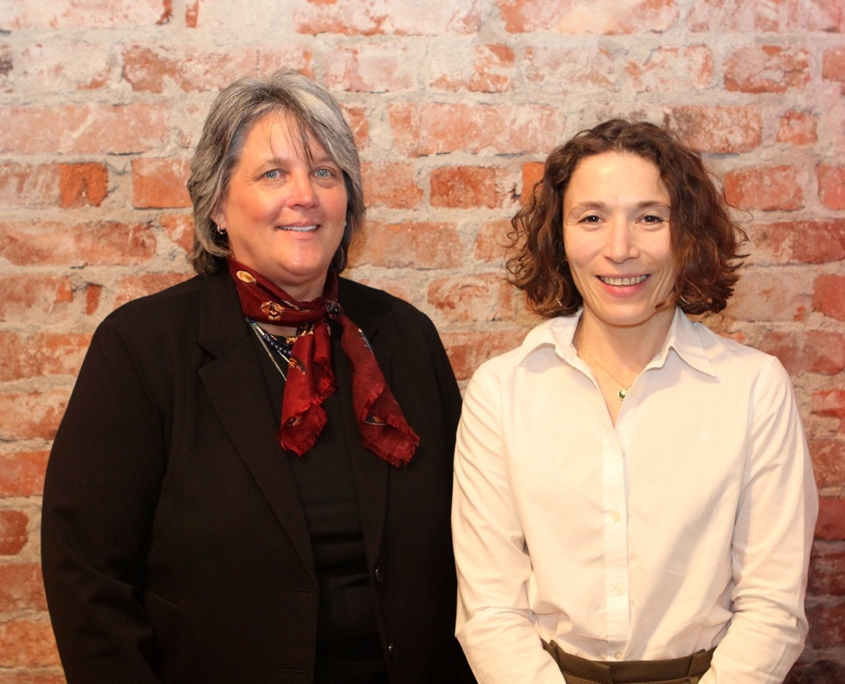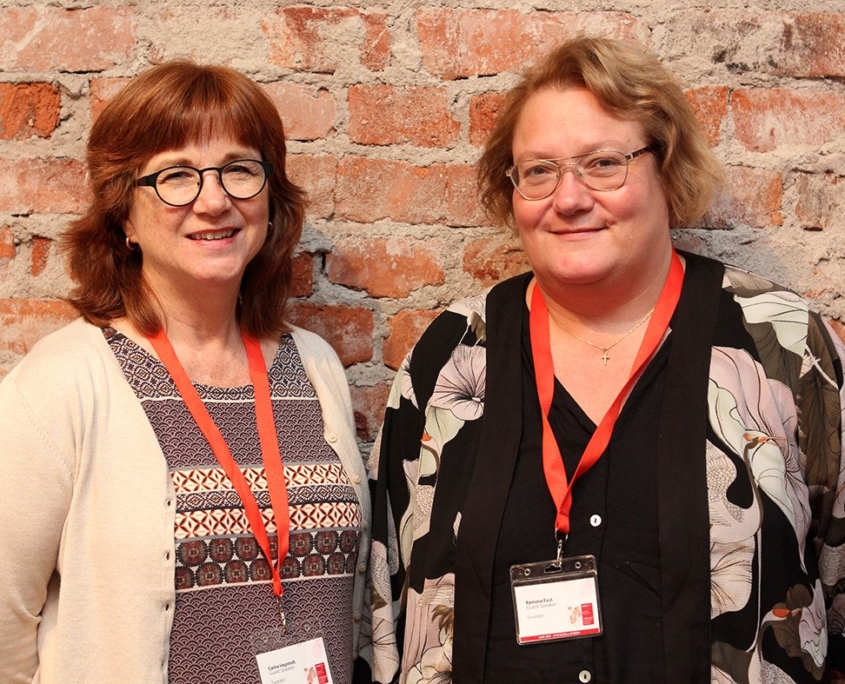June 2019
Nordic PID Meeting focuses on immunoglobulins supply
This very interesting, educational and informative meeting was organised for the Nordic countries – Denmark, Finland, Iceland, Norway and Sweden – by the Swedish patient organisation PIO on Saturday May 25, in Stockholm.
The very first Nordic meeting took place in 1998 and ever since then, representatives from each Nordic country have met every year to discuss and share common interests but, in view of the issues surrounding access to immunoglobulin, it was decided to hold this extraordinary meeting.
Presentations started with an educational and informative overview on plasma collections by Alexa Wetzel – Director Source Europe, PPTA.
Alexa began with the information that there are 11 private sector plasma collectors in Europe – 123 centres situated in Germany, Austria, Czech Republic and Hungary, collecting 2.4 million litres in 2018.
In 2015 over 48 million litres of source and recovered plasma were fractionated worldwide. It also showed that there is an urgent need for more plasma collection due to the increased demand.
A welcome explanation was given about “What is Plasma”, followed by the differences in whole blood and plasma donations, such as frequency of donations, duration of the donation and the process involved. The need for Plasma Derived Medicinal Products (PDMPs) is increasing and the EU relies very heavily on the US for the supply of plasma. EU countries have to be encouraged to create more collection programs focusing on the health of donors and the patients’ needs.
Alexa pointed out that the need for coexistence of private and public collection is key as is the need to increase awareness of plasma donations with the use of targeted campaigns such as “How is your Day”.
Julie Birkofer, Senior Vice President of North America and Global Health Policy PPTA, gave the next presentation on the Role of the Payer – Impacts on Patients’ Access to Ig and the Important Role of the Differentiation-Effective Communication with Payers.
Julie opened her talk with the names of the pharmaceutical companies, which are the PPTA manufacturers, and a world map showing where their manufacturing sites were located.
An in-depth explanation followed on the fractionation process that takes between 7 – 12 months. One litre of plasma consists of Albumin (25grams), Immunoglobulin (4 grams), Alpha-1 Antitrypsin (0.15 to 0.3 grams), Coagulation Factors. It can take 130+ donations to treat a single adult patient living with a PID for a year! The number of donation centres in the US has grown to 737 by the end of last year, compared to 123 in Europe.
Julie then spoke about access to treatment and the problems associated with this issue, such as HTA (might control funding), tendering process, economic restraints etc. There should be an effective communication with payers, including collaboration with patients, healthcare providers, PPTA, and the individual Company, not forgetting the important WHO Essential Medicine List.
Why is a plasma protein therapy different from other medicines? First of all, it is a biological product, which cannot be made in a laboratory. They are not generic and not interchangeable products that increase life expectancy, improve quality of life and reduce life threatening complications for patients with plasma protein deficiencies.
After lunch Jose Drabwell spoke about the global picture of plasma collection and Ig supply, the impact on patients’ health and quality of life, the differences between the Nordic countries and the importance of working together. Charts were shown regarding the annual increase in consumption rates across the continents and in Europe as well as the projected need for increased plasma to fulfil the growing demand for Plasma Derived Medicinal Products (PDMPs). Economic and political pressures are contributing to the difficulties in increasing the production of PDMPs.
PLUS, the Plasma User platform group, is working actively at the political level to ensure knowledge and understanding of the differences between blood and plasma at various key meetings. The impact on patients’ health and quality of life is affected by concerns about future supplies, the availability and continuation of the same infusion product, enforced switching due to shortage of product, changing from IVIG to SCIG or vice versa without prior knowledge, switching from a 10% to a 5% product with longer infusion time, higher volume which is detrimental to elderly and those with specific problems. There’s some anxiety regarding sustainability of plasma supplies and political and financial pressures that are beyond a patient’s control.
An overview of the differences between the Nordic countries, availability of products in each country, plasma collection and fractionation possibilities as well as regulatory agencies which might be of help in each country was also presented by Jose.
Finally, the importance of working together as Nordic countries, similar characteristics, aligning advocacy and awareness campaigns. Early warning should be shared as soon as possible. Support and educate the HTA agencies, ensuring that there is an understanding of PIDs and the complexity of this special condition.
Two Swedish nurses, Ramona Fust and Carina Hagstedt, gave their personal view on the challenging issues surrounding being able to look after their patients and ensuring that they are receiving their immunoglobulin as prescribed difficult to ascertain who is receiving the Ig products, such as off-label use, given hematology patients use high volumes. Often the nurses are forced to use the cheapest product. All this dilutes their duties as it involves a lot of extra administrative work for these healthcare professionals who would otherwise spend their time on patients’ needs and welfare.
This was followed by presentations from Dr Borre Fevang, a Senior consultant at Oslo University Hospital, and Anders Fasth, Professor of Paediatric Immunology in Gothenburg, both reporting problems with continuation of supplies and additional problems such as each county having a different tendering process in place.
The final session of the day was taken up by inviting the attending pharmaceutical companies to answer specific questions compiled by patients, nurses and doctors. Each company was able to answer the many questions freely as this was a closed session with one company being present in the room. Most interesting was the fact that their concerns were very similar to that of the patients.
The conclusion of the meeting was that each country needs to be more aware of the possibilities of plasma and blood collections and the regulatory issues surrounding these and should collaborate with the necessary agencies and make contact with their National Competency Agency (NCA) and the HTA agencies as well as to collect more information on the tendering process in place in their country.






